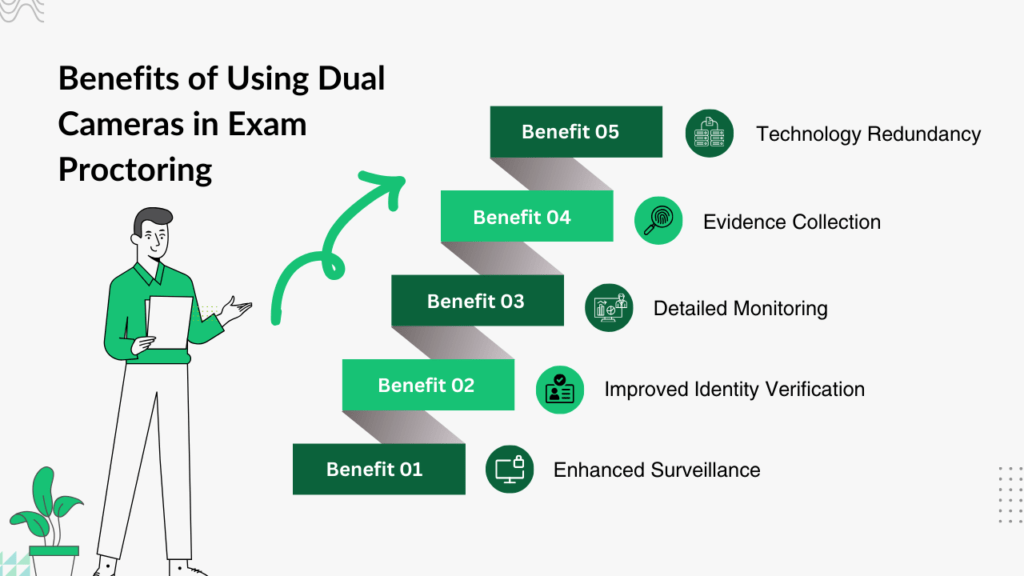Table of Contents
Introduction
The rapid progress in technology has revolutionized recruitment and assessment processes, significantly enhancing efficiency and accuracy. Online assessments, facilitated by sophisticated AI systems like ChatGPT, raise concerns about maintaining assessment integrity. In the digital age, where technology has transformed education, ensuring the fairness and accuracy of online evaluations is paramount to prevent academic dishonesty and uphold the value of assessments.
AI-Assisted Exam Cheating
ChatGPT, created by OpenAI, is a chatbot utilizing an AI language model. With its advanced natural language processing capabilities, ChatGPT can answer queries, produce text, translate languages, and generate various forms of creative content. Crafted to emulate human-like responses, it utilizes a vast dataset of internet text during its training phase, ensuring its ability to generate contextually appropriate replies to text prompts. Nowadays, it is also used for cheating in online assessments.
Techniques used by students to cheat in online assessments
Instant Answers:
Students can use AI chatbots to gain an unfair advantage by feeding exam questions and receiving instant answers.
Paraphrasing Tools:
Students are using AI paraphrasing tools to cleverly rephrase existing content, potentially deceiving plagiarism checkers in essays.
Outmaneuvering Proctoring Systems:
Students are using AI to outmaneuver online proctoring systems. This includes generating deceptive virtual backgrounds and fooling facial recognition technology.
Data Analysis:
Students can now analyze vast amounts of past exam data using machine learning to identify patterns and predict questions, potentially undermining the intended assessment of knowledge.
How ExamOnline’s Proctoring Solutions protects the Sanctity of Online Assessments
Secure Browser Functionality:
To uphold the authenticity of online assessment, it is imperative to establish secure testing environments. Utilizing the Secure browser feature, such as Safe Exam Browser-based proctored online examinations, ensures the confidentiality and integrity of the assessment. This approach guarantees that online assessment are conducted securely and free from unauthorized access or interference.
Advanced AI-based Proctoring Technology:
AI-powered remote proctoring technology offers a seamless and technology-driven alternative to traditional on-site supervision. These solutions leverage Anti-Cheating Technology and AI-enabled monitoring tools to ensure a safe and comprehensive experience for educators and students. Key features include:
• Voice/Audio Recognition:
Identifying background noise and speech patterns to detect potential malpractice.
• Facial Recognition:
Verify the student’s identity and ensure the examination’s integrity.
• Object Detection:
Identifying unauthorized objects on-screen, such as mobile phones or books, to prevent malpractice.
• Eye Movement Detection:
Analysing subtle eye movements to detect irregular patterns, indicating possible wrongdoing. This technology is integral to enhancing the accuracy of AI systems in detecting cheating attempts.
Human Proctoring:
Human proctoring has a crucial advantage against the growing threat of AI-based cheating in online assessments, particularly with tools like ChatGPT on the rise. Unlike AI-driven monitoring systems that can be outsmarted, human proctors offer a level of vigilance and intuition that technology alone cannot match. They are adept at detecting subtle signs of cheating and can intervene in real time to maintain the integrity of the exam environment. By providing personalized oversight and gathering tangible evidence, human proctoring effectively deters cheating attempts, ensuring that students are evaluated fairly and accurately. It’s this combination of human insight and technological support that makes human proctoring a trusted defence against the challenges posed by AI-driven cheating tactics.
Benefits of Dual Cameras in Exam Proctoring
Integrating dual cameras in online proctoring setups can significantly enhance the monitoring process, providing multiple angles and more comprehensive coverage of the exam environment. Here are some key benefits:

- Enhanced Surveillance: Dual cameras capture a wider range of the student’s environment, reducing blind spots and providing a more complete view, which helps detect suspicious activity more effectively.
- Improved Identity Verification: With two cameras, one can focus on the student’s face for identity verification while the other monitors the surroundings, ensuring that the person taking the exam is a registered student.
- Detailed Monitoring: Dual cameras allow for detailed monitoring of the student’s activities and movements, making it easier to spot unusual behaviour that may indicate cheating attempts.
- Evidence Collection: Having recordings from two different perspectives can serve as stronger evidence in case of disputes or accusations of malpractice, providing a clearer context of the situation.
- Technology Redundancy: If one camera fails or has a technical issue, the other can continue to monitor, ensuring that the exam process remains uninterrupted and secure.

